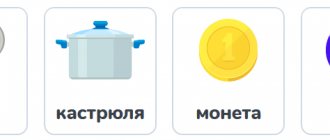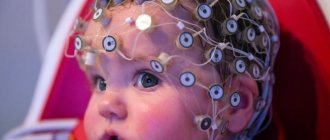The ICP monitoring system allows you to conduct a primary screening study of intracranial pressure in newborns and children under 1 year of age in a non-invasive way and see ICP numbers on the screen of a bedside monitor. Includes ICP sensor, amplifier (signal decoder), cable for connection to a bedside monitor (custom made), 2 calibration kits, instructions and recommendations for clinical use. The system is calibrated at the interface between water and air and is intended for reusable use. The measurement error is 2-3 mmHg, due to the anatomy and principle of the study. Considering that the measurement is carried out without a high potential risk for a small patient (non-invasively), the results are interpreted as screening and allow one to assess the risks of developing complications of increased intracranial pressure. For example, if a child’s ICP figures are 20-25 mmHg. and higher, then the existing measurement error can be neglected, since the zero drift is 2-3 mmHg. Art. in such conditions it has no clinical significance; urgent measures are required to reduce intracranial pressure in the child. The measurement error of ICP monitors designed for invasive ICP measurement through the burr hole or subdural ranges from 1 to 2 mmHg. (depending on the brand of monitor).
Currently, this technique is successfully used in the Russian Federation and the CIS and is available for both public health facilities and private clinics. The system can be used both in a hospital and on an outpatient basis. The system is manufactured in the UK.
Clinical picture (symptoms)
With arterial hypertension, the manifestations are different and depend on the severity. With moderate high blood pressure, there may be no symptoms, but rarely the child experiences headaches, fatigue, and excessive irritability. A significant increase in blood pressure is accompanied by:
- anxiety;
- unmotivated crying;
- apnea attacks;
- shortness of breath.
Pulmonary hypertension manifests itself:
- heavy breathing of the child;
- retracting the pliable parts of the chest while inhaling;
- reduced saturation (saturation of hemoglobin with oxygen);
- cyanosis of the skin and mucous membranes.
With increased pressure in the pulmonary arteries, the child’s response to oxygen therapy is practically absent, which is why the procedure is ineffective.
Among the clinical manifestations of intracranial high pressure :
- decreased sucking activity;
- tense, swollen fontanelles that lack pulsation;
- dilated superficial veins of the head area;
- unmotivated crying, screaming;
- convulsions;
- divergent cranial sutures;
- damage to the cranial nerves, which is accompanied by impaired motor functions of the eyeball, sense of smell, work of the cervical, facial and trapezius muscles, heart, gastrointestinal tract and many other systems.
Also, the newborn develops Graefe syndrome, in which part of the sclera can be seen at the top of the eyeball. The phenomenon is observed only when the child’s eyes are downcast.
Reasons for the development of the pathological condition
Among the main reasons for the development of the pathological process, doctors name:
- Heredity.
- Somatic pathologies.
- Exchange disorders.
Manifestation of headache
| Organs and systems | Nature of pathological processes |
| Kidneys | |
| CNS | |
| Heart and circulatory system | |
| Endocrine system | |
| Other anomalies |
Factors for the development of ICH
The main provocateur of intracranial pathology is the improper movement of fluid that is produced by the ventricles of the brain.
An episodic jump in ICP can also occur in a completely healthy baby for physiological reasons, for example, during the period of crying or breastfeeding, which is explained by physical and mental stress at this moment.
If it is impossible to determine the provoking factor of the painful condition, doctors diagnose the baby with a congenital pathology - intracranial hypertension of the idiopathic type.
Causes of pulmonary hypertension
Pulmonary hypertension in infants of the persistent type is diagnosed in babies born on time or post-term.
- Intracranial pressure in infants: symptoms, dangers, how to treat
Main reasons for development:
- Hypoxia or suffocation during the perinatal period of the fetus.
- Meconium staining of amniotic fluid.
- Penetration of original feces into the trachea.
- Respiratory distress syndrome.
- Closure of the foramen rotundum or arterial canal.
- Underdevelopment of the entire lung structure.
- Diaphragmatic hernia of intrauterine nature.
- Pneumonia of newborns (neonatal sepsis).
Signs of intracranial pressure in a child
In children, the following signs of persistent increased intracranial pressure are identified:
- headache;
- nausea;
- pain in the chest cavity;
- irritability;
- vomit;
- loss of appetite;
- moderate weight loss;
- fatigue.
Intracranial hypertension in infants
With the development of benign hypertension, the occurrence of dangerous complications, such as hydrocephalus or deformation of the bones or sutures of the skull, is not observed. Severe ICH is usually a consequence of neurological pathologies, brain tumors or injuries, which are accompanied by hemorrhage. The main symptoms of ICP in one-year-old children:
- long healing of fontanelles;
- restless sleep;
- increase in head size;
- delayed neuropsychic and physical development.
Symptoms
The pathological condition can manifest itself in different ways. The main signs of increased blood pressure are usually accompanied by characteristic symptoms of the primary disease. In addition, a lot depends on the age of the child. Symptoms and treatment of infants and schoolchildren have their own characteristics.
It makes sense to distinguish between two age categories that have differences in the manifestation of increased intracranial pressure. The first group is children who have not yet turned one year old. The second is children older than this age. Why is one year of age a cutoff point? By this age (give or take a few months), the last “fontanelle” on the baby’s head usually heals. “Fontanelle” is a section of the skull in which there are openings between the bones.
How to determine increased intracranial pressure in children under one year of age? There are many symptoms, but each of them is not an unambiguous indication of a dangerous diagnosis; they can only be used to suspect the presence of a pathology in a child.
- The child cries and screams for a long time for no apparent reason, behaves restlessly, and is nervous.
A characteristic sign of pathology is frequent crying at night. It is at this time, when the baby must be in a lying position for a long time, the outflow of blood through the veins of the brain is inhibited, the blood stagnates, overflowing the vessels, and disrupts the outflow of cerebrospinal fluid. The pressure in the skull increases.
- The child has poor, short-term sleep: he has difficulty falling asleep, constantly wakes up, and cries.
The explanation is the same: when the baby lies, the movement of blood from the head slows down.
- Under the thin skin on the baby's head, you can see a pronounced network of blood vessels.
This happens because when the pressure on the brain increases, the venous vessels collect a large amount of blood, which cannot drain away. As a result, the veins located under the skin become clearly defined.
- The child began to eat poorly.
The process of extracting milk from the mother's breast is a very labor-intensive task for the infant. When it “works,” it naturally begins to increase. If the baby is healthy, this will not cause him any discomfort. But in the case of an existing fact of increased pressure inside the skull above normal, the additional load makes itself felt. The baby experiences pain and discomfort, so he abandons the breast. As a result, you can notice a lag in weight in such a child.
- The baby constantly burps, and profusely. There are frequent attacks of vomiting. Such symptoms indicate the possibility of developing intracranial hypertension.
But in this case, we cannot exclude the presence of other causes, which are also characterized by such a symptom: overeating, air entering the esophagus.
- Upon examination, the doctor may find that the “fontanelles” have become convex and swollen. There is also often a disproportionate increase in head volume. The forehead especially grows. The sutures of the cranial bones begin to separate.
The normal volume of the head should be less than the volume of the baby's chest, starting from 6 months. If this does not happen, and the head is still large, this should serve as an alarming signal. Violation of proportions can be noticed in dynamics with regular head measurements.
- The baby’s development is inhibited, retardation is observed both in physical and mental parameters.
- There is a disorder in the functions of the nerves responsible for the movement of the eyeballs. This phenomenon is commonly called Graefe syndrome.
This sign can be noticed by the spontaneous lowering of the eyeballs; a white stripe (sclera) is clearly visible in the gap between the upper eyelid and the iris of the eye.
Due to the external similarity of the phenomena, this symptom is also called the “setting sun symptom.”
It would also be advisable to consider the symptoms of the pathological condition in older children (after 6 years):
- frequent attacks of nausea, vomiting may occur;
- pain in the eyeball area;
- difficulty falling asleep;
- dizzy;
- seeing double;
- chronic fatigue, lethargy, apathy;
- emotions are overflowing: aggression, tearfulness, whims for no reason;
- convulsive syndrome;
- headache in the evenings and at night;
- attention is scattered, the child has become forgetful.
ICH treatment tactics
When ICH syndrome is detected, therapy is carried out under medical supervision. The need for inpatient treatment is due to the fact that intracranial hypertension is not an autonomous disease, but acts as a sign of another pathological process (hydrocephalus or encephalopathy). Therefore, doctors need to find the root cause of this abnormality.
Therapy of intracranial hypertension in one-year-old children is carried out using several methods, based on the severity of the pathology.
For mild to moderate severity of the disease, non-drug and drug therapy is practiced:
- With a non-drug approach, it is recommended: diet, massage, physiotherapy, therapeutic exercises.
- With regular surges in intracranial pressure, medications are prescribed whose action is aimed at stopping the etiological factor. Additionally, one or more types of diuretics are prescribed.
At the same time, a number of therapeutic measures are carried out to significantly improve the baby’s well-being and prevent the development of complications.
Drastic treatment methods are also practiced in advanced stages of intracranial hypotension or the presence of a malignant focus, when the use of conservative measures is no longer advisable.
Diagnosis of intracranial pressure
Before prescribing treatment for your child, we perform a comprehensive neurological examination. It includes:
- Collecting anamnesis (conversation with the mother, studying the child’s medical record, history of pregnancy and childbirth and the results of previous studies);
- special neurological tests;
- active and muscle tests;
- reflex diagnostics;
- local palpation examination of the spine and musculoskeletal system.
In addition to the main examination, if necessary, the doctor may prescribe:
- NSG (neurosonography, ultrasound of the brain);
- MRI;
- Ultrasound;
- X-ray;
- Lab tests;
- EEG;
Types of neonatal hypertension and causes of their occurrence
In pediatrics, there are 3 types of hypertension:
- Arterial.
- Pulmonary.
- Intracranial.
Depending on the type of pathological phenomenon, the clinical picture, complications, treatment methods and causes will vary.
- Symptomatic arterial hypertension
Arterial hypertension
This is a secondary disease, which most often manifests itself against the background of other pathologies of the child. For a baby born at 38-42 weeks of gestation (full-term baby), the diagnosis of arterial hypertension is made when the systolic pressure level is more than 90 mmHg. Art., diastolic - more than 60. For premature babies, the level of indicators for diagnosis is reduced to 80 and 50 mm Hg. Art. respectively.
Possible causes of arterial hypertension in newborns:
- coarctation of the aorta;
- blockage or blood clots in the renal arteries;
- pyelonephritis;
- renal failure;
- kidney tumor or hyperplasia of renal tissue.
Kidney pathologies occupy a significant place in the development of hypertension and account for about 70% of all cases of the disease in children. Also, the pathological condition in question may occur against the background of an unsuccessful blood transfusion to the baby.
You can learn from this video what a disease such as arterial hypertension is, how it is characterized and why it can occur in children.
Pulmonary hypertension
This is a syndrome in which an infant experiences increased pressure in the pulmonary arteries. The syndrome manifests itself in 2 forms: primary and secondary.
Primary hypertension occurs in 0.3% of cases in both full-term and post-term infants. Causes of primary hypertension:
- pathologies that lead to hypoxia and asphyxia;
- diaphragmatic hernia;
- neonatal sepsis.
Secondary syndrome is the result of congenital diseases affecting the lung parenchyma. Possible causes of the disease:
- meconium aspiration syndrome;
- distress syndrome;
- pneumonia in a newborn.
Premature babies are less susceptible to this disease, which is due to the anatomical features of the development of smooth muscle tissue that surrounds the arterioles and appears by the 30th week of the gestational period.
- Purulent conjunctivitis in children: how to recognize and treat?
This video talks about the features of pulmonary hypertension in children: forms, symptoms, diagnosis, and other nuances.
Intracranial hypertension
Hypertension is characterized by increased intracranial pressure. This condition is a manifestation of another pathology that cannot occur independently.
Diseases that can cause the development of hypertension:
- intrauterine hypoxia;
- birth of a child at 22-30 weeks of pregnancy;
- tumor, the presence of other foreign tissues compressing the tissue of the cerebral hemispheres;
- injuries to the head and neck vessels that occurred during passage through the birth canal.
An increase in intracranial pressure occurs due to an increase in fluids, such as tissue, cerebrospinal fluid, and blood, which compress the brain tissue.
What is the essence of increased intracranial pressure?
The brain is washed externally and internally by cerebrospinal fluid (CSF). It nourishes, washes and protects brain structures from mechanical influences, maintains optimal intracranial pressure, and also regulates metabolic processes between blood and brain.
Liquor constantly circulates in the ventricles of the brain, inside the skull and other spaces of the spinal cord and brain. In certain areas, liquid accumulates, flows out and, having been distributed over other spaces, is absorbed back. There is a certain balance between the absorption and release of cerebrospinal fluid. If more fluid is released than is absorbed or less is absorbed than is released, or there are obstacles to the outflow of cerebrospinal fluid, the fluid begins to accumulate in a certain place, which causes intracranial pressure.
Since the brain is located in a closed cavity of the skull, the accumulated fluid begins to compress the brain, causing an increase in pressure. In this case, the child may experience episodic attacks of headaches.
Intracranial hypertension is not a rare case in infants. The cause of hypertension in a child from birth can be an intrauterine infection or hypoxia, neuroinfection, birth trauma, congenital defects or prematurity. Such children grow up with elevated levels of hypertension from an early age and get used to them, so they do not complain of headaches. The child may experience excessive excitability, lack of concentration and slow formation of certain mental functions (speech, walking, memory, writing, counting, logic, phonemic hearing). Therefore, if any disturbances in the functioning of the nervous system are detected, you should consult a doctor and undergo the necessary examinations.
Prolonged exposure of the brain to cerebrospinal fluid leads to its reduction. At the same time, the number of liquid cavities increases. This condition is called hydrocephalus. It is accompanied by partial replacement of brain matter with cerebrospinal fluid. In severe clinical cases, newborns experience a disruption in the development of nervous system functions and develop cerebral palsy (cerebral palsy). Severe hydrocephalus is treated with a brain shunt. In most cases, using osteopathic techniques, it is possible to get rid of this disease without surgery.
Signs of increased intracranial pressure in older children
In a child of an older age category, arterial hypertension is manifested by the following symptoms:
- Nausea, vomiting. Occurs against the background of irritation of the membranes of the medulla oblongata. The difference between vomiting in hypertension and vomiting in poisoning is that it does not bring relief.
- Pain behind the eyeballs. They are formed due to the effect of cerebrospinal fluid on the orbital area.
- The appearance of ribbons, flashes, double vision. This occurs as a result of irritation of the optic nerves.
- Attacks of headaches that get worse in the evening and at night.
- Restless sleep, irritability, tearfulness.
Why is unstable intracranial pressure dangerous?
The lack of appropriate treatment for hypertension can provoke the appearance of epileptic seizures and the death of certain parts of the brain due to oxygen deficiency. Chronic increased intracranial pressure, even with minor fluctuations from the norm, negatively affects the activity of the central nervous system. At the same time, signs of nervous exhaustion develop quite quickly, such as sleep disturbance, irritability, fatigue, as well as a decrease in intellectual and physical activity.
The greatest danger with unstable pressure is congestion in the optic discs, which can cause atrophy of nerve tissue, a sharp drop in vision and even complete uncorrectable blindness.
High blood pressure in young children: symptoms of the disease
Increased intracranial pressure can be manifested by the following pathological disorders and symptoms:
- Severe crying, restlessness. A distinctive feature of unstable intracranial pressure is that throughout the day the child may feel well and be relatively calm. In the evening and at night the baby begins to cry and becomes restless. This is due to the anatomy of the cerebrospinal fluid and venous systems. The baby lies down more at night and in the evening. As a result, venous outflow slows down, and the veins of the skull and brain become congested. As a result, the volume of cerebrospinal fluid increases, which provokes the development of arterial hypertension.
- Difficulty falling asleep, frequent waking up, sleep disturbance. The listed symptoms are also due to the structure of the venous and cerebrospinal fluid systems.
- Nausea, attacks of vomiting, profuse, frequent regurgitation. These clinical manifestations are reflex. High intracranial exposure provokes irritation of the membranes of the medulla oblongata, which is responsible for nausea and vomiting. It should be borne in mind that frequent regurgitation in a child can be caused by swallowing air during feeding and overfeeding. Therefore, it is not recommended to draw conclusions about intracranial hypertension based on symptoms alone. However, this pathology cannot be excluded either.
- Increase in head volume. The accumulation of cerebrospinal fluid in the cerebrospinal spaces can lead to divergence of the sutures of the cranial bones, enlargement of the frontal part of the skull, enlargement of the fontanelles and disproportionate size of the head.
- The appearance of a venous network under the scalp. With hypertension, excessive filling and stagnation of blood occurs in the venous network. This provokes expansion of the saphenous veins, which makes them visually noticeable.
- Graefe's symptom. It manifests itself as a dysfunction of the oculomotor nerves, which occurs against the background of birth trauma or high blood pressure. The eyeballs periodically begin to deviate downward, and the sclera becomes visible between the upper eyelid and the edge of the iris.
- Refusal to feed. In infants, intracranial pressure physiologically increases, which leads to increased pain. The result of refusal to feed a child is a lack of weight gain.
Disturbances in psycho-emotional and physical development. This can be caused by insufficient feeding and the presence of damaging factors on the brain.
Treatment of increased intracranial pressure with osteopathy
Living with hypertension for a child is unpleasant and harmful to health.
Under the influence of increased compression, brain structures cannot function normally. This causes atrophy of the white brain fluid, followed by a decrease in intellectual abilities and dysregulation of internal organs. To avoid the above complications, treatment of hypertension should begin as early as possible. To alleviate the child’s condition and normalize intracranial pressure, it is important to restore the balance between the absorption and production of cerebrospinal fluid. Traditional medicine uses diuretics for this. Osteopathy treats arterial hypertension in children using safe manual techniques that normalize the level of cerebrospinal fluid without surgery or drug therapy. Osteopathic techniques are aimed at unloading the venous bed of the head and eliminating pinching of blood vessels by the vertebrae.










